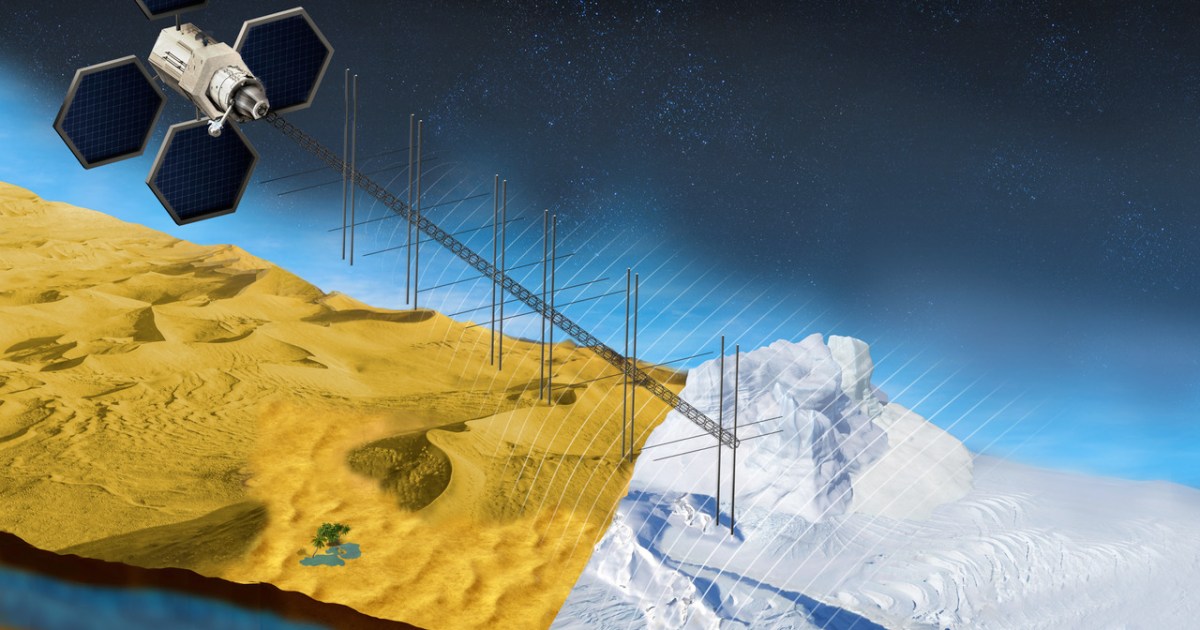To study desert and arid regions ... a partnership between NASA and Qatar Foundation
He announced the signing of a joint cooperation project in the space field between the US Space Agency (NASA) and the Qatar Foundation, which aims to formulate a scientific satellite project that will draw groundwater maps and study the melting of ice in the north and south poles of the Earth, according to the Qatar News Agency.
The project aims to understand water resources and the effects of climate change from rising sea levels on desert and arid regions, which include the Arabian Peninsula and North Africa.
The first phase aims to design the vehicle “OASIS”, meaning the oasis and the devices attached to it, and to prepare a plan for launch in late 2025 in conjunction with the low cycle of solar traffic, after the various stages of the project have been completed.
According to the international agreements officially announced on the NASA website, this agreement - which carries the number 668 - is the first joint agreement between NASA and an Arab country regarding the design of a spacecraft for these climate studies.
The NASA Jet Propulsion Laboratory is participating in this study, in cooperation with researchers at Hamad Bin Khalifa University, a member of Qatar Foundation, under the supervision of Dr.
Issam Hajji, head of the project.
Dr. said.
Hajji to Al-Jazeera Net This is the first mission entirely devoted to studying desert and arid regions, whose extent of interaction with the climate changes in the next few decades is not fully known, which plagues many regions of North Africa and the Arabian Peninsula.
The data of the vehicle "OASIS" will contribute to collecting unique information on the locations and properties of groundwater at a depth of 50 meters from the surface of the earth, and measuring changes in the thickness of ice at the North and South Poles to determine their role in the rise in ocean levels that threaten many regions around the world, especially low desert areas, using technology Radar photography.
Haji went back to pointing out that - within the next two years - the design of the low-frequency radar imaging device will be developed on this vehicle, so that this survey can be carried out, which is a difficult task due to the need to develop and use radar antennas of a few tens of meters that are difficult to place on orbiting vehicles Close to the upper layers of Earth's dense atmosphere.
Therefore, the project creates a unique design, and not a reproduction of similar experiments previously launched on the moon and Mars, according to Dr.
Haggai.
The project was announced in conjunction with the US-Qatar Qatar Cooperation Conference, held in Washington, with the participation of the Ministers of Foreign Affairs and Education and other leaders from the United States and Qatar.
The project is the culmination of efforts that began 10 years ago, including several studies and collaborations in Kuwait, Oman, Morocco and Tunisia.
The Qatar Foundation for Education, Science and Community Development and Qatar Museums signed, last Wednesday, 3 agreements with American institutions for cooperation and partnership in educational fields, research related to water, climate change, sports, and heritage preservation, according to the official agency.
The agreements included the announcement of a cooperation project between Qatar Foundation and "NASA".
Researchers from the Geosciences Program of the Agency's Jet Propulsion Laboratory, and the Qatar Environmental and Energy Research Institute of Hamad Bin Khalifa University, will work on a project to design a research mission to study groundwater in desert areas and the thickness of ice layers in polar regions.
Sandy desert and glacial regions are the driest places in the world.

